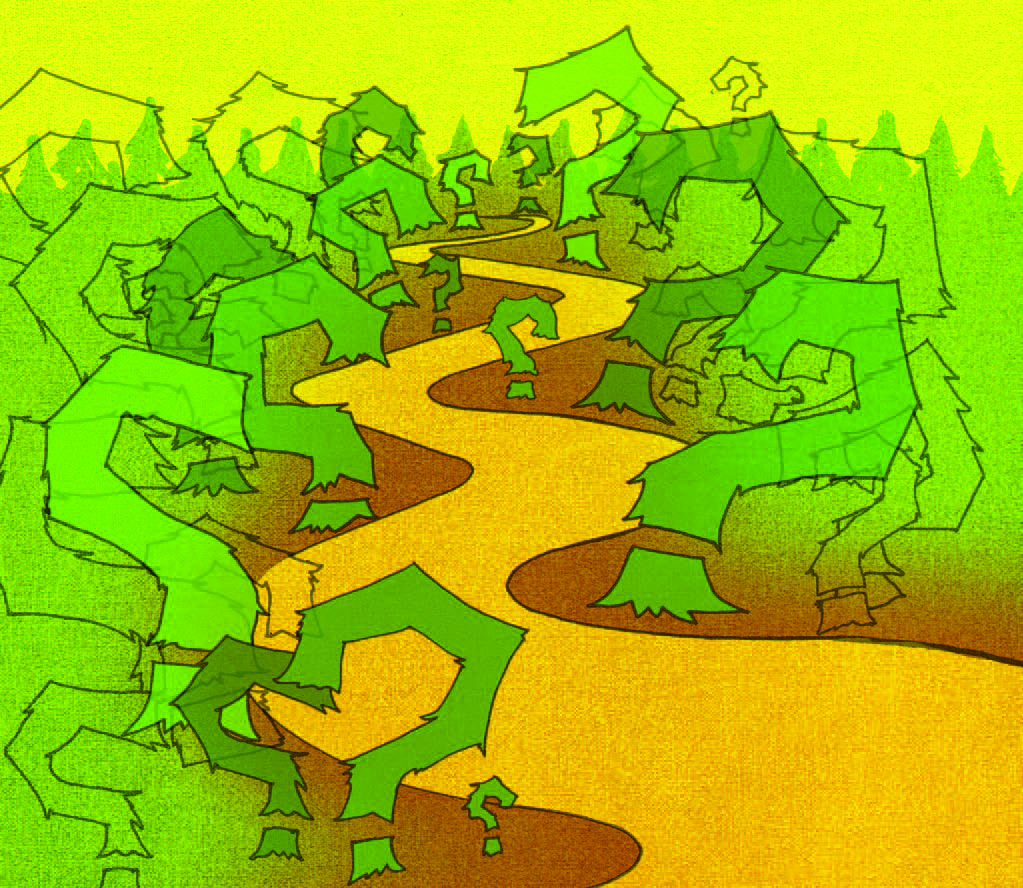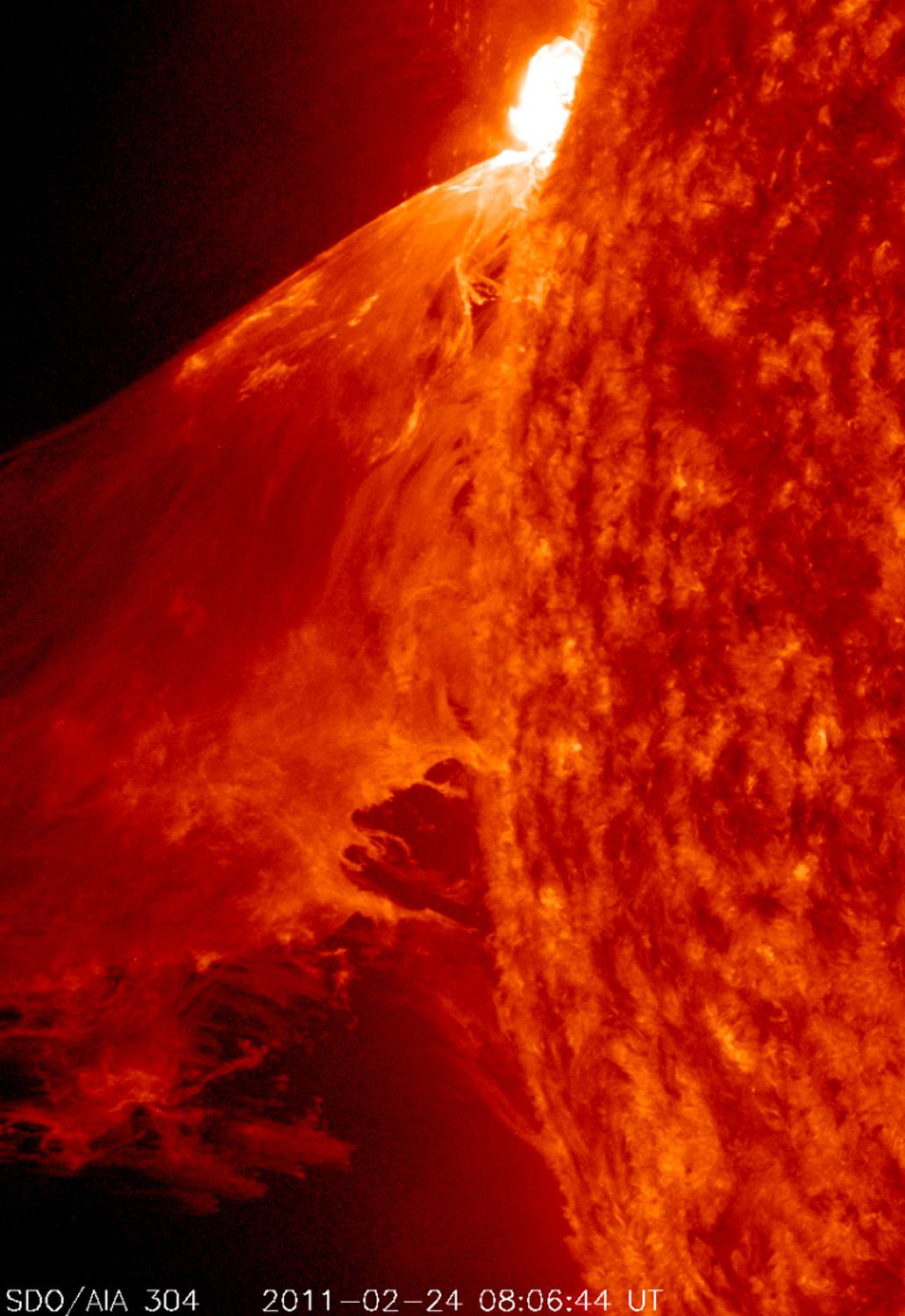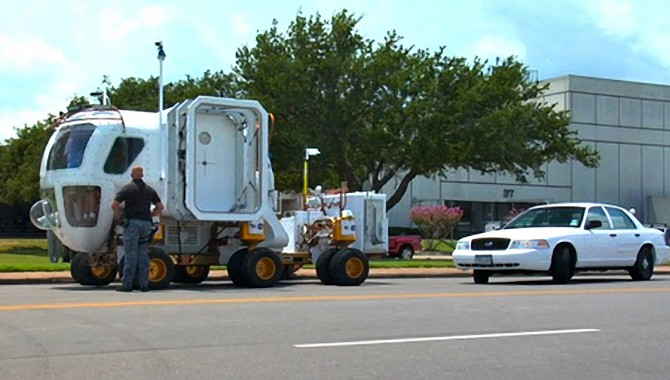
By Blair Allen
NASA has many outlets for sharing details about what goes on behind its doors, but none so personable as NASA EDGE, a video podcast (or vodcast) that grew out of an idea to be “different … unscripted and unpredictable.” After four years, sixty-two vodcasts, and more than seventeen million downloads, the description still applies.
The show originally came together after Chris Giersch and I, who had both worked in NASA education programs, connected right after I finished my work on the NASA SCI Files, a series of instructional programs comprising broadcast, print, and online elements. He called my manager to talk about a potential new show, so I put together a few ideas—none of which were great. It didn’t matter, however, because Chris really was hoping to do a show for NASA that resembled ESPN’s Mike and Mike in the Morning.
He pitched that idea to me and asked if I thought we could do it. I loved the idea and really liked the format of hosts/characters talking freely and openly about NASA. We had been doing that for years, it just wasn’t a “show.”
Chris went to NASA Headquarters and got enough money to shoot a pilot. It wasn’t a lot of money. In fact, we hosted the show ourselves because we didn’t have enough money to pay actors. As it turned out, Debbie Scrivner, former NASA Exploration Systems Mission Directorate communications lead, loved the pilot and funded it with the caveat that Chris, Franklin, and I remain on the show.
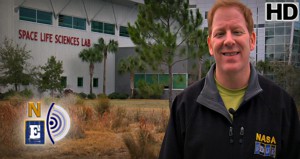
Co-Host Blair Allen at the Kennedy Space Center Life Sciences Lab to investigate dust mitigation.
Photo Credit: NASA EDGE
Being unscripted has proved vital to the show’s success. When the NASA EDGE team interviews NASA engineers and scientists, we rely more on instincts than talking points to explore projects and missions. This helps keep the show conversational, and guests don’t have to worry about memorizing scripted responses. We ask questions, get clarification, joke and laugh about things—all of which doesn’t happen well with a script.
That spirit of creative freedom has been an important part of the development of NASA EDGE. Our formula can be unpredictable and has its own inherent risks—like not coming across as well as you could with scripted material or saying something completely wrong or using the wrong name for something NASA has renamed—but the reward is a growing, loyal audience that seems eager to learn more about NASA in a nontraditional way.
“You have to take risks,” Ron Beard, our set therapist, laughingly said. “These guys take risks, and the co-host fails, a lot. But the risks are how we all find out what really works and what doesn’t.”
Mission Madness was one such risk. We had developed the idea of putting NASA missions (past, present, and future) together in an online, head-to-head, single-elimination tournament based on popular vote. We generated a huge amount of exposure, discussion, and fan participation during the tournament, but we took a lot of valid criticism for allowing multiple voting. There were lots of ways to go with the voting, and we felt like we went with our best option, but in the process we learned so much. If Mission Madness returns, it will look different as a result.
One thing that has continued to work is our combining both an inside and outside look at NASA. To identify with a broad audience, you need to really talk to them—and speak in terms they understand. NASA can come across as too “sciency,” which isn’t necessarily bad—after all there are tons of engineers and scientists within and outside NASA who want to learn about what their peers are doing. But when non-scientists and non-engineers hear about goings-on at NASA, they come up with very different questions, which need different answers.
If I, the goofy co-host, can ask crazy questions, then the audience feels their questions can be asked as well. We all ask scientific and wacky questions, but on the whole, the co-host asks a lot more of the wacky and a lot less of the scientific ones.
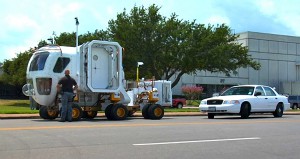
The Space Exploration Vehicle is pulled over for speeding in a NASA EDGE promo.
Photo Credit: NASA EDGE
Staying in touch with fans is an important part of the show’s character. “Facebook and Twitter are huge for us,” said Chris, co-creator, project manager, and host of NASA EDGE. “We talk to our fans all the time. Sometimes we take questions, quotes, and status updates and use them on the show. We have even had a few Facebook fans come on the show and report the news.”
And when NASA EDGE travels or attends an event, we can usually find a few of our fans willing to meet us for lunch or dinner. People love NASA. They’ll even come and hang-out with me to find out more about the agency. It is also a great way for us to find out more about them—exactly what our fans like and dislike about the show. We may not do focus groups, but we do listen to our fans.
Listening to the fans is critical, but it is also important to listen to the folks at NASA. We are NASA, after all. We’re not out just to get a story. We’re here because NASA does really cool stuff, and we want to be part of it.
This became really evident during our recent work with the Desert Research and Technology Studies (D-RATS). What started as a simple interview became a team effort to contribute to the amazing work of the D-RATS team.
“I remember talking to Barbara Romig about opportunities to shoot, and she mentioned that they weren’t able to cover everything they wanted to with video,” Chris recalled. “Well, we have three cameras. So after the interview, we just started shooting more and more video and gave it to them.” This helped us realize that there were more opportunities to serve NASA in addition to giving them exposure through our vodcast; we could actually contribute to their work.
This is now a standard procedure for NASA EDGE, and we actively look for these kinds of opportunities. For example, in January 2011 we were shooting an interview about dust mitigation with Dr. Carlos Calle at Kennedy Space Center. We shot a nice demonstration of their test article, but we only got one angle. Dr. Calle and his team helped set up the demonstration in a different part of the lab to get an even better view and greater magnification. When they saw the footage, even they were blown away: they hadn’t seen the view we were able to give them. We shot several versions and provided them with high-definition video of their test the next day.
Covering the launch of Pad Abort 1—the test of the Orion launch abort system—was another great experience; it was the audience response that really made it. Three entirely different motors developed by three different teams were tested during that launch. As Orion left the pad, the crowd erupted with cheers. During the flight, each of the three motors fired at different times. Loud cheers erupted as each fired successfully. It was great to see, hear, and feel their excitement at the success of their work.
Because we are covering all kinds of missions and aspects of projects, we get to see the big picture that many of the folks working on the details don’t. Whenever we shoot a segment, we ask the NASA scientists and engineers if they need anything, and we share our relevant footage with them. This is another way of adding value to the overall production.
Most of the scientists and engineers are happy to work with us because we help them in an area with which they are unfamiliar, and we always try to make it a team effort. It is important for us to have them buy into whatever we do because ultimately we are all working to get the word out.
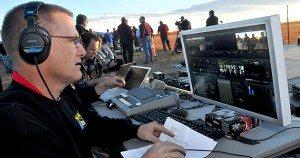
Ron Beard during the NASA EDGE live broadcast from Pad Abort 1, launched May 6, 2010, at White Sands Missile Range, N.M.
Photo Credit: NASA EDGE
If a mission has a social media presence, we’ll try to incorporate that into what we do. If we can find multiple purposes for our footage or promote a mission via NASA EDGE commercials, we will. We like to shoot promos that aren’t simply about NASA but rather include NASA projects, personnel, and context. For example, we shot a promo at Johnson Space Center that featured the Space Exploration Vehicle being pulled over for speeding. We shot a space food promo with the people who actually work in the food lab.
This team building has worked so well that it has branched out into different media. In 2010, NASA EDGE released its first NASA app for the iPhone. It is a Lunar Electric Rover Simulator that allows players to drive the rover around the lunar surface and learn about the requirements of a lunar outpost. As a bonus, NASA EDGE used Barbara Romig and Joe Kosmo (D-RATS test leads) as voice talent. The team is currently working on a NASA EDGE iPad app.
Having fun with what we do really helps keep our team well knit but also makes it easier for us to create new connections with our extended NASA family, something I feel really comes across in our vodcasts. Being unscripted, being open to the outside view, working closely with the scientists and engineers—all of it comes together, not always seamlessly, but in a way that gives NASA EDGE its unique style: casual but respectful, goofy but informed, fast-paced and fun. We have a great time interacting with each other, our NASA colleagues, and our fans, and it shows. It draws in our audience and often gives us—and our viewers—access to things they might never have learned about otherwise.
Engaging our varied audiences in new and exciting ways presents a continual challenge for us, but it’s one we approach happily. We learn more about NASA right along with our fans, and we love sharing the great many things NASA does in a way our audiences can understand and enjoy.
About the Author
 |
Blair Allen once participated in a focus group to determine the publics knowledge of NASA. After demonstrating a profound lack of even the most basic NASA facts, he became the poster boy for NASA outreach. If NASA could inform Blair, the public would bubble over with information on the agencys programs. After six years of intense work, he was approached by NASA EDGE to see if they could successfully educate him. Hes been learning ever since. |






